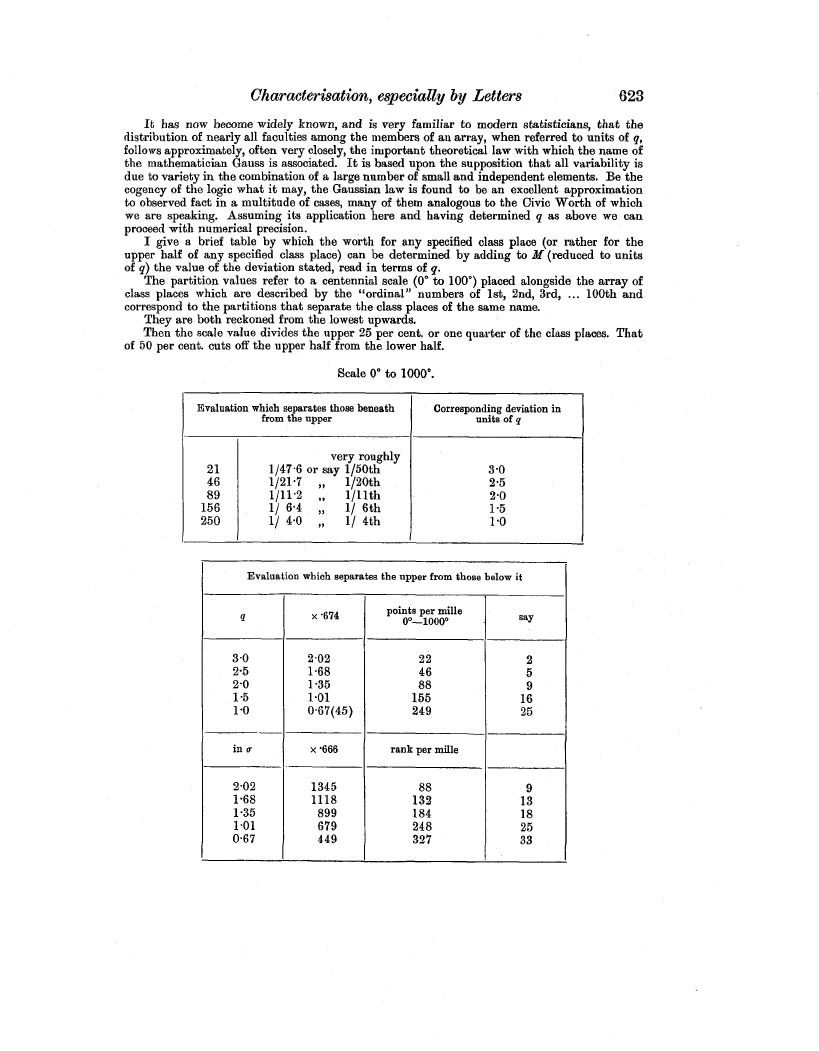| ||||||

OCR Rendition - approximate
Characterisation, especially by Letters 623 It has now become widely known, and is very familiar to modern statisticians, that the distribution of nearly all faculties among the members of au array, when referred to units of q, follows approximately, often very closely, the important theoretical law with which the name of the mathematician Gauss is associated. It is based upon the supposition that all variability is due to variety in the combination of a large number of small and independent elements. Be the cogency of the logic what it may, the Gaussian law is found to be an excellent approximation to observed fact in a multitude of cases, many of them analogous to the Civic Worth of which we are speaking. Assuming its application here and having determined q as above we can proceed with numerical precision. I give a brief table by which the worth for any specified class place (or rather for the upper half of any specified class place) can be determined by adding to M (reduced to units of q) the value of the deviation stated, read in terms of q. The partition values refer to a centennial scale (0° to 100°) placed alongside the array of class places which are described by the "ordinal" numbers of 1st, 2nd, 3rd, ... 100th and correspond to the partitions that separate the class places of the same name. They are both reckoned from the lowest upwards. Then the scale value divides the upper 25 per cent. or one quarter of the class places. That of 50 per cent. cuts off the upper half from the lower half. Scale 0° to 1000°.
| ||||||||||||||||||||||||||||||||||||||||||||||||||||||||||||||||||||||||||||